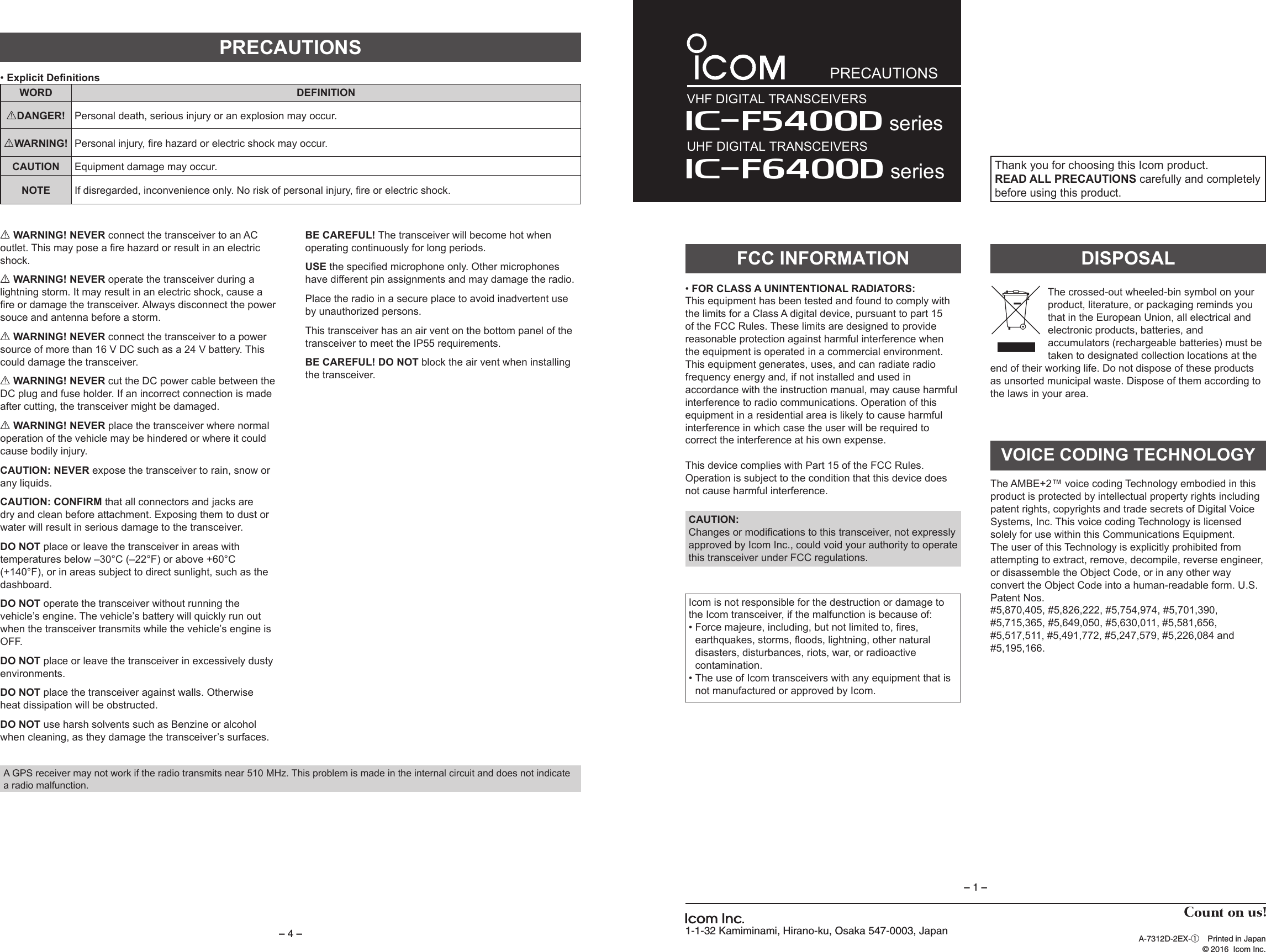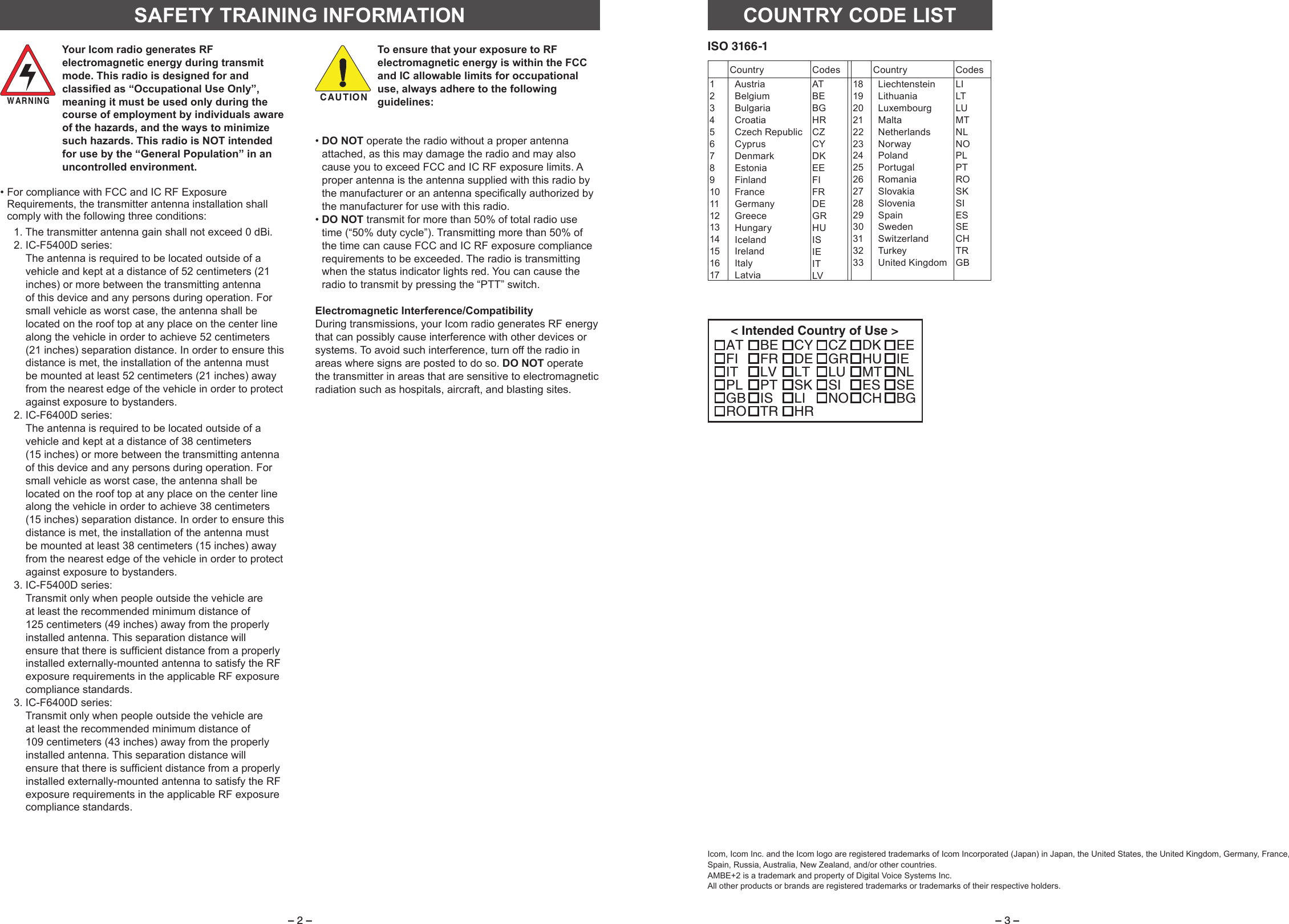ICOM orporated 376902 UHF Digital Transceiver User Manual IC F5400D F6400D Series PC 0 indd
ICOM Incorporated UHF Digital Transceiver IC F5400D F6400D Series PC 0 indd
Contents
- 1. User manual Instructions
- 2. User Manual Precautions
- 3. User Manual
User Manual Precautions

